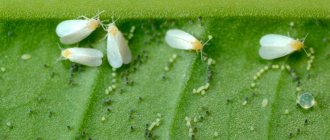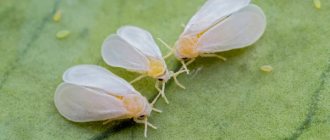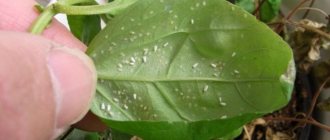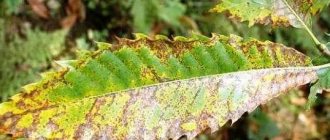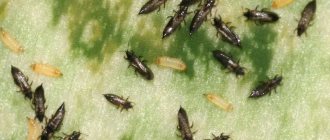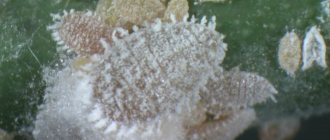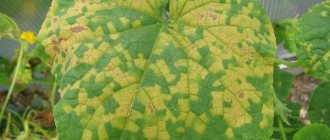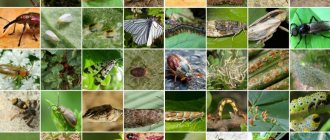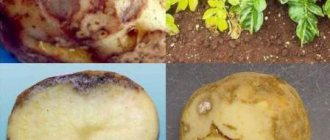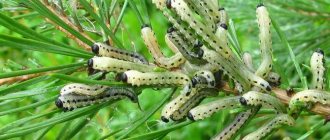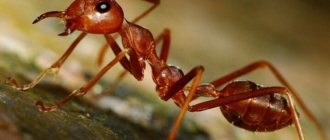All lovers of indoor plants have at least once asked the question: “Where did insects come from on a flower?” After all, it would seem that raising green pets indoors is a guarantee that no infection will harm them. Unfortunately, this is not the case, and from time to time almost every home garden is subject to an invasion of parasites.
Here are some of the most common causes of the epidemic:
- Open vents and windows. Flying insects easily penetrate through vents and cracks in the window.
- Moving plants outdoors during the warm season.
- Purchase of an infected plant. When buying another beautiful flower, you may not notice lurking pests, which in indoor conditions begin to multiply quickly, spreading to nearby crops.
[!] Many nurseries, both domestic and foreign, are infested with insects. Despite the measures taken, some of the plants go on sale already infected.
- Transplantation into a new substrate. Often, various insects live in soil taken from a garden or forest. At home, parasites, unable to find other food, attack the flower. Unfortunately, some purchased soils are also infested with pests.
- Errors in care. Overwatering, underwatering, too dry or, conversely, humid air, insufficient or excessive lighting - all this weakens the plant. The resistance of a sick organism decreases, and insects willingly take advantage of this by attacking the flower.
As you can see, there are quite enough ways for aggressors to enter the closed space of an apartment. Of course, in indoor conditions, pests attack plants much less often than in open ground, but if this happens, fighting them becomes a real difficulty.
Symptoms to recognize harmful insects
What needs to be done to save pets? First of all, find out what harmful insects have infested the flowers. To do this, a thorough examination of the plant itself and the soil is carried out. After this, they begin a merciless fight using various methods. Remember, any delay is fraught with disastrous consequences.
Insects live in the soil (on roots), on leaves, stems, and gnaw buds.
Pests of indoor plants
| in the soil (in the ground) | on the green parts of the flower |
| root mealybug | mealybug |
| enchytrea | whitefly |
| root-knot nematodes (larvae) | spider and clover mite |
| fungus gnats | scale insect |
| white idiot | aphid |
| cyclamen mite |
Plants react to each pest in a special way: they can change the color of leaves and slow down their growth. When visually examining a houseplant, you can notice changes in the leaves and stems.
Appearance of white spots
White spots are a signal of the appearance of:
- Mealybug or rootbug. You need to examine all parts of the flower. If you notice “cotton” lumps, it means there is a pest.
- When whiteflies appear, the leaves become sticky and may fall off.
- The presence of a red spider (clover) mite can be determined by the whitish mesh, spider mite by the cobweb. Leaves with a large number of insects die off.
What do yellow spots signal?
If yellow spots appear on the leaves, you need to inspect the leaves. If fingers stick to them, these are marks left by scale insects. The cause may be the appearance of enchytraea. Tiny white worms live in the soil right at the root.
Brown spots
The presence of brown, brownish spots on the bottom of the leaf and white streaks on top indicates the action of thrips.
Deformation of green parts of the plant
If the shoots and leaves on the flowers begin to deform, it means that the flower is affected by aphids or cyclamin mites. Aphids leave behind sticky residues. It sucks the juice from indoor plants, which can cause them to dry out. If dust appears on the leaves below, they curl—the mite is in control.
Withering
The cause of drooping leaves and shoots is fungus gnats, leaf or root-knot nematodes.
Folk recipes against aphids and spider mites
To combat garden pests, decoctions of strong-smelling herbs containing toxic substances are widely used. The general principle of preparing infusions is described above.
Marigolds (Tagetis)
The entire above-ground part of the plant is used. Raw materials are taken 0.5 kg / 10 liters of water.
Mustard powder
The powder, in the amount of 100 grams, is poured with 1 liter of boiling water.
Tops of tomatoes, potatoes, nightshade
The ratio of tops and water is 1 kg/10 liters. Mandatory condition: the green mass must be without signs of spoilage or fungal infections. Otherwise, there is a risk instead of benefit, spreading fungal diseases throughout the area.
Wood ash (recipe 1)
- Pour sifted ash (3 kg) into a bucket of cold water and leave for 2 days.
- Strain thoroughly before use.
In addition to the repellent effect, the infusion of ash will work as a foliar feeding.
Wood ash (recipe 2)
Use the same amount of ingredients, but add boiling water. Can be used after 3 – 4 hours.
Ash and soap bathing
Effectively helps against aphids. The tops of infected plants are lowered into a container with a solution and washed manually. Even a single bath will get rid of a significant number of insects.
Take a solution prepared according to any method described above. Add 300 grams of planed laundry soap. You can use liquid green soap - 130 ml.
Tobacco dust
Tobacco dust powder, or dry parts of the plant – 200 g, steam with 5 liters of boiling water. After cooling, bring to 10 l.
Pine needles
Pine needles additionally have a stimulating effect. Pour 1 kg of pine or fir needles with 4 liters of water. Leave for a week, stirring occasionally. Dilute the prepared liquid by half before use.
Description of pests
Pests of indoor plants can cause harm and lead to the death of green spaces if they are not dealt with. Let's look at the most common insects and their destructive activities.
Spider mite
Spider mites are the most common “guest” on indoor plants. Due to their small size, they cannot be seen with the naked eye. You need to examine the lower part of the flower, because these pests do not tolerate light and moisture. Insects may appear in a dry and hot room. In such conditions, the development of spider mites is rapid.
If you have geraniums, hibiscus, palm trees, aspidistra, then they need to be inspected constantly. Insects pierce the tender part of the leaves and suck out the juice. As a result, the leaves become faded and crumble.
Aphid
Aphids can be seen despite their small size. They come in black and green. Insect colonies multiply rapidly: the female lays at least 150 larvae, which after 7 days themselves enter the reproduction stage. Females of the third generation have the ability to fly. They move onto any indoor plants and lay larvae. Diseases are transferred to flowers on their paws, for example, different types of flower mosaics. Getting rid of aphids is not as easy as it seems.
Shields
Scale insects on indoor plants are a dangerous pest; they love to settle on cuttings, leaves, and stems. It is not difficult to detect: it is flat, oval, with the lower part of its body tightly adjacent to the substrate.
These pests are different. Real scale insects hide under their shells, just like turtles. False scale insects do not have this possibility, since this part of the body is inseparable.
The favorite colors of these pests are:
- lemons;
- oranges;
- tangerines;
- asparagus;
- oleanders;
- ivies;
- palm trees
Scale insects settle on the lower part of the leaf. Colonies develop quickly. Slowly moving dots appear on the leaves, somewhat reminiscent of plaques. The leaves around their habitat turn yellow. Insects suck out the juice of tender plants and shoots, depleting the plant. If you do not start a timely fight, indoor flowers die.
Thrips
Ficus, begonias, dracaenas, and palm trees are affected by a small jumping beetle - thrips. The females make holes in the leaves or flower buds and lay eggs. The damage is microscopic and impossible to notice with the naked eye. A signal that thrips are on indoor plants is a silvery pattern appearing on the leaves. The insects themselves live on the back side of the leaf.
White Podura
These creatures can also jump. This is a soil insect that lives directly in pots. It is distinguished by an elongated body, on which sparse hairs are visible. There are antennae on the head. Most often they appear in soils rich in humus.
The basis of nutrition is plant residues, but it does not disdain the living root system. It is clear that the eaten roots can no longer cope with their function, the plant slows down its growth and may die.
Mealybugs
These are white worms; they love the back of the leaf in the places where the vein runs. Females are large, up to half a centimeter, very fertile. They build houses for their offspring that look like balls of cotton wool, and lay eggs in them. The hatched larvae are mobile and quickly conquer space on the flowers. Gardeners who grow azaleas and cacti need to constantly inspect their plants for signs of mealybugs. These pests of indoor plants prefer them and it is necessary to take immediate measures to combat them.
Whitefly
Whiteflies are, by and large, greenhouse insects. If you purchased flowers in these places, do not be lazy to examine them carefully. Even one female whitefly on indoor plants will produce huge offspring in a short time. Then the question will arise of how to fight. The pest's favorite flowers are fuchsias, ferns, and geraniums. The two-millimeter insect feeds on plant sap, and as a result it weakens and withers.
Fungus gnats
It often happens that flower growers notice small flies flying around their flowers, but do not attach any importance to it. And in vain, because the fly lays larvae in moist, fertile soil. The larvae are microscopic, so their appearance is not immediately noticeable. The danger of insects is that the smallest creatures feed on the root system of plants. As a result, the flower dies.
Ways to combat Colorado potato beetles
Mixtures prepared independently are aimed at repelling adult insects. Treatment is carried out before the appearance of beetles and during their summer.
Walnut leaves
Dry leaves (2 - 3 kg), add 10 liters of water, infuse for 3 - 5 days.
Birch tar
Dilute a 100 ml bottle of tar in a bucket of water. Spray potato tops every 2 - 3 days. You can use tar soap - 100 g bar.
Multicomponent mixture
Pour all ingredients into a bucket of water and bring to a boil. After 12 hours you can use it by thoroughly watering the leaves.
Compound:
- wormwood - 0.3 kg;
- hot pepper (powder) - 1.5 tablespoons;
- garlic - 0.2 kg;
- soap - 50 g;
- hemlock - 0.2 kg
How to control pests on indoor plants
Many novice gardeners are wondering how to deal with pests of indoor plants. The answer to this is important, since insects multiply rapidly, time must not be wasted.
There are different ways to help get rid of pests:
- mechanical;
- biological;
- folk;
- chemical.
If pests of indoor plants are correctly identified, and measures to combat them will be effective.
Mechanical
You need to start with the measures that are safest for humans, especially since they often help a lot. Before starting work, you should disinfect and sharpen your tools. All damaged leaves and shoots are cut off, and the cut areas should be sprinkled with activated carbon. Bugs and visible larvae are selected manually: scale insects, slugs, caterpillars. Leaves with pests such as aphids can be wiped with a cotton pad. A contrast shower and spraying with water helps get rid of pests living on the green parts of the plant.
Biological
How to fight harmful insects with biological means? Such preparations are created based on plants. Most often used:
- "Fitoverm";
- "Agrovertin";
- "Iskra-Bio".
Before use, you should read the instructions. Since they destroy pests, they contain poison in small doses. The plants are treated early in the morning and left in a shaded place until all parts of the plant are dry. The room where the treatment was carried out is ventilated. You need to wash all exposed parts of the body with warm water and detergent.
Traditional methods
If indoor plant pests appear, treatment can be carried out with time-tested folk remedies. For this, decoctions and infusions are prepared from:
- yarrow;
- chamomile;
- dandelion;
- marigolds;
- nettle;
- garlic;
- Luke;
- peels of oranges, tangerines, lemons.
These environmentally friendly and harmless plants can effectively destroy harmful insects. Steamed citrus peels can be buried in the soil. Insects don't like their smell.
An infusion of tobacco, stove ash, a solution of potassium permanganate, furatsilin or soda works well. To prevent the liquid from immediately draining from the plants, laundry soap is added to it.
Chemical
When using chemical pest control products, rapid success can be achieved. It is better to resort to their help as a last resort if other methods have not given a positive result. It should be remembered that such products are unsafe for humans and beneficial insects. You need to work with chemicals with the window open, removing children and animals from the room. In addition, when working you need to use personal protective equipment. After work, you need to thoroughly wash your hands and face. The treated plants are placed in the shade until the solution is completely dry. The area where the treatment was carried out must be washed with hot water and detergents. Remember that chemicals are toxic, therefore, they should be stored in places inaccessible to children and pets. Popular and effective remedies for pests of indoor plants:
- "Karbofos";
- "Chlorophos";
- "Syphos";
- "Trichlorometaphos";
- "Pyrethrum";
- "Decis";
- "Fury."
They are capable of destroying almost all harmful insects.
What are insecticides?
Insecticides are chemical or biological agents that kill insect pests. Biological agents are not so dangerous. Before using any insecticide, you need to test it on one plant. If after 24 hours the condition of the flower has not worsened, then you can use the product on all plants of this variety. To prevent plants from becoming addicted, it is recommended to alternate insecticides for indoor plants.
Treat all plants, being sure to follow safety precautions. It is necessary to wear at least a respirator when using insecticides, since the drug is very quickly absorbed into the blood through the lungs. Read the instructions carefully and follow them when using the drug.
Which plants need spraying?
Cyperus, guzmania and palm trees are plants that require regular spraying
Most houseplants benefit from misting.
They are especially important for species with dense, leathery or large, rosette-forming leaves. Such indoor flowers evaporate a lot of moisture and need high air humidity, especially in the summer or heating season at temperatures above 20°C.
Regular spraying is necessary:
- tropical plants, for example, calathea, aglaonema, anthurium, orchid;
- coniferous species, in particular cypress and araucaria;
- citrus fruits - lemon, tangerine, grapefruit;
- plants with delicate flowers, for example azaleas, brunfelsia, anthurium, gardenia, but it is advisable to protect the petals from water;
- ferns, ficus;
- bromeliads - Aechmea, Nidularium, Neoregelia, which under natural conditions absorb water that falls into funnels from the leaves during rain.
Fitosporin-M
The systemic fungicide Fitosporin-M is a preparation of biological origin. The waste products of Bacillus subtilis, which make up the active ingredient of the pesticide, suppress the proliferation of pathogens that cause diseases. The breadth of use of the biofungicide is noted by both gardeners and home gardening enthusiasts. At the same time, it has low toxicity for humans and animals and is absolutely non-phytotoxic. It is possible to spray plants at any time during the growing season, as well as watering to treat the soil, and soaking the seed material and root system of seedlings before planting.
Fitosporin
Three forms of the drug are available, differing in the number of bacteria per unit of substance and solubility in water.
- The powder has the largest number of spores and living cells, but it does not dissolve well and requires pre-soaking 1-2 hours before treatment. For prevention, spraying is carried out with a solution of 0.5 teaspoon (1.5 g) per 2 liters of water, for treatment: the same amount of the drug, but per 1 liter of water. For soaking and watering, dilute 2 grams in 1 liter of water.
- The biofungicide is easily diluted in paste form, but it has the lowest bacterial titer. To water the soil, use 15 drops of the substance per 1 liter of water, and 10 for spraying.
- The average between the two previous forms is an aqueous suspension, which also has a gentler effect on plants. The solution for all types of its use will be the same: 10 drops of fungicide per 1 glass of water.
Mealybug
A white sticky coating, similar to a cobweb, is a sign of the formation of a clutch of mealybug eggs. The parasite lays a large number of eggs under the web.
What does an insect look like?
An adult female, no more than 5 mm long, comes in pink, white, and beige colors. Along its body there are small bristles covered with a white powdery coating.
To immediately notice that something is wrong, pay attention to whether sticky drops appear on the plant. This is the first stage of infection of a green pet.
Next, a sticky white coating forms, resembling pieces of cotton wool. At the last stage of infection, a change in the shape of flowers and leaves occurs. The leaves take on a marbled color and are covered with spots of red or yellow.
When leaf blades change, photosynthesis is disrupted and the plant dies.
The reasons for the appearance of this pest: dry air, temperatures above plus 20ºС, unfavorable conditions for development. Most often, the pest multiplies in winter, when there is a lack of lighting, dry air, and excessive watering, leading to stagnation of water in the soil and pan.
The most dangerous phenomenon in winter is waterlogging. Too much water in the soil leads to rotting of the roots, the appearance of parasites and microbes. When watering, you should pay attention not to the interval between waterings, but to the condition of the roots.
How to spray water for spraying
The quality of spraying depends on the size of the sprayed droplets. A simple sprayer that supplies water by pressing the handle of a hand pump has several modes of operation, but the particles of water that fly out of the holes are quite large and uneven. More modern models allow you to create a fine mist that lingers in the air much longer. When it gets on the leaves, its drops are quickly absorbed, and the residues easily evaporate without causing increased humidity on the shoots of plants.
It should be taken into account that when caring for indoor flowers, both spraying methods are used:
- A fine spray of water in the form of a mist is suitable for daily increasing the air humidity around the bush.
- Spraying larger drops is required for foliar feeding with fertilizer solutions and removing dirt and dust from the surface of leaves.
